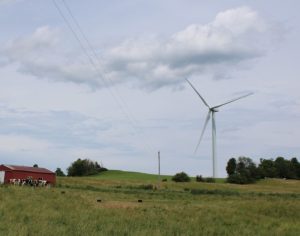The total number of employed workers declined in Central New York, the Mohawk Valley, the North Country, Southern Tier, and Western New York from 2011 to 2016, while increasing in other regions of the state.
That’s according to a report entitled “Labor Force Trends in New York State,” which New York State Comptroller Thomas DiNapoli released on Monday.
“Factors driving such labor-force declines could include migration of workers to other regions within New York or outside the state, as well as individuals dropping out of the workforce,” according to the report’s executive summary.
(Sponsored)

The New Rule for Independent Contractors – Are You Ready?
Effective March 11, 2024, the US Department of Labor will change the analysis it uses to determine whether an individual is an employee or independent contractor under the Fair Labor

10 Reasons Your Business Needs Cyber Insurance
1. Cyber crime is the fastest growing crime in the world, but most attacks are not covered by standard property or crime insurance policies. New crimes are emerging every day.
The report found most Upstate regions posted employment “declines” in 2016, even as more than 9.1 million New Yorkers were working “for the first time since the Great Recession,” led by growth Downstate.
Regional growth remained “uneven,” with downstate regions generating the “highest” employment growth.
While each of New York’s 10 labor-market regions had unemployment rates decline sharply from 2011 to 2016, in half of those markets, the number of people with jobs also dropped. For example, the employment count dipped 2 percent in Central New York, 4 percent each in the Mohawk Valley and North Country, and 6 percent in the Southern Tier. Western New York posted a 1 percent decline in employed workers.
Factors could include worker migration or workers dropping out of the labor force, DiNapoli’s office said.
A shrinking workforce can “dampen” economic growth, “affecting the vitality” of local communities and “raising fiscal issues” at state and local levels, the comptroller said.
Other findings
The DiNapoli report found that Long Island had the highest labor-force participation rate of any region in the state in 2016, at 63.8 percent. Participation rates in the Capital Region and the Hudson Valley also topped 60 percent, followed by New York City. The North Country had the lowest labor-force participation rate at just over 50 percent. The Southern Tier and Mohawk Valley had participation rates in the mid-50s.
As of 2016, more than 913,000 New Yorkers were unemployed, marginally attached to the labor force or working part-time for “economic reasons.”
The report also found nearly 24 percent of workers in New York belonged to unions in 2016, the “highest” participation rate of any state and “more than double” the national average.
New York’s labor force is “well educated,” with 40.6 percent holding a bachelor’s degree or higher, compared to 34.7 percent nationwide.
The workforce is aging in New York and nationally, with the number of workers aged 65 and over rising by 26 percent in New York over the past five years, compared to a 19 percent increase nationwide.
Statewide, women constitute nearly 48 percent of the labor force, slightly higher than the national average.
Contact Reinhardt at ereinhardt@cnybj.com




